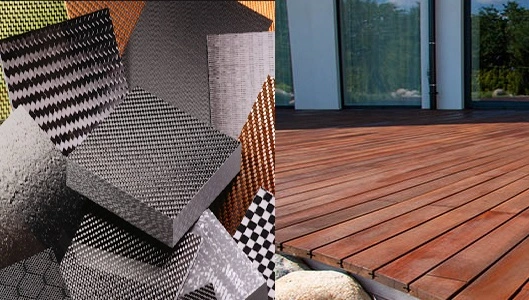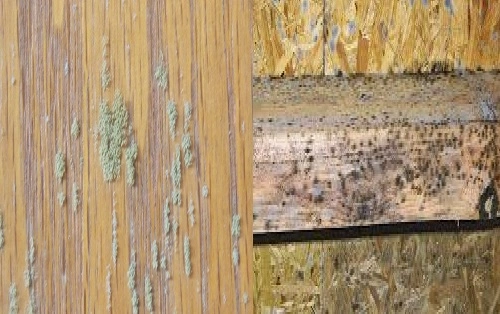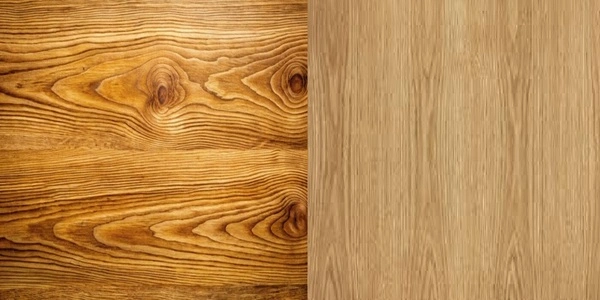Building or renovating a deck is a significant investment for homeowners looking to extend their living space outdoors. One of the biggest decisions you’ll face is choosing between composite decking and wood decking. Both materials have their pros and cons, and understanding their differences can help you make the right choice for your lifestyle, budget, and aesthetic preferences.
In this article, we’ll break down the key factors to consider when comparing composite decking and wood decking, including durability, maintenance, cost, aesthetics, and environmental impact.
What is Composite Decking?
Composite decking is made from a blend of wood fibers and recycled plastics, creating a durable and low-maintenance material that mimics the look of wood. Modern composite boards are designed to resist weather, fading, and moisture damage, making them popular among homeowners who value longevity and ease of care.
Common brands like Trex, TimberTech, and Fiberon offer a variety of composite decking options in multiple colors, textures, and finishes.
What is Wood Decking?
Wood decking is made from natural timber, including softwoods like cedar and pressure-treated pine, or hardwoods like redwood, ipe, or teak. Wood is a timeless and versatile material that has been used for decks for decades. It’s prized for its natural beauty, classic appearance, and affordability, but it requires more maintenance than composite decking.
Composite vs. Wood Decking: Key Comparisons
| Feature | Composite Decking | Wood Decking |
|---|---|---|
| Material | Recycled wood fibers and plastics | Natural wood (softwood or hardwood) |
| Durability | Extremely durable; resists rot and decay | Durable but prone to rot, splintering, and warping |
| Maintenance | Low maintenance; no staining required | Requires regular staining, sealing, and repairs |
| Aesthetics | Mimics wood but uniform appearance | Natural, unique grains and textures |
| Lifespan | 25–30+ years | 10–20 years (softwoods), 30+ for hardwoods |
| Cost | Higher upfront cost | Lower upfront cost, but higher maintenance |
| Eco-Friendliness | Made from recycled materials | Renewable, but sourcing affects sustainability |
| Weather Resistance | Resists moisture, mold, and fading | Prone to water damage and fading |
1. Durability
- Composite Decking:
Composite decks are incredibly durable and built to withstand harsh weather conditions. They are resistant to rot, mold, insects, and moisture damage, making them ideal for climates with heavy rain, humidity, or temperature fluctuations. Unlike wood, composite boards don’t splinter, warp, or crack over time. - Wood Decking:
While hardwoods like ipe and redwood are highly durable, softwoods (like cedar or pressure-treated pine) are more susceptible to rot, splintering, and insect damage. Even with regular maintenance, wood can warp or crack over time, especially in wet climates.
Winner: Composite Decking
Composite materials offer superior durability and resistance to the elements.
2. Maintenance
- Composite Decking:
One of the biggest advantages of composite decking is its low maintenance. It does not require staining, painting, or sealing. Simple cleaning with soap and water is usually enough to keep the deck looking like new. - Wood Decking:
Wood decks require regular maintenance to protect against moisture, rot, and UV damage. This includes staining, sealing, or painting every 1–2 years. Without proper care, wood can lose its color, develop cracks, or become a breeding ground for mold and insects.
Winner: Composite Decking
For busy homeowners, composite is the clear choice for its minimal upkeep.
3. Aesthetics and Appearance
- Composite Decking:
Composite boards are designed to mimic the look of real wood. They come in a variety of colors, textures, and finishes, some even with embossed wood grain patterns. However, because they are manufactured, composite boards have a more uniform and consistent appearance, which may lack the natural character of real wood. - Wood Decking:
Wood decking offers a natural, warm aesthetic that is hard to replicate. Each board has its own grain pattern, texture, and color, making every wood deck unique. Wood also ages beautifully, developing a rustic patina over time if left untreated.
Winner: Wood Decking
For homeowners who love the authentic, natural look of wood, nothing compares to real timber.
4. Cost
- Composite Decking:
Composite decking has a higher upfront cost, with prices ranging between $5 and $13 per square foot, depending on the brand and quality. However, since it requires little maintenance, the long-term costs are significantly lower. - Wood Decking:
Wood decking has a lower initial cost, ranging from $2 to $8 per square foot for pressure-treated pine or cedar. However, the costs of maintenance—like staining, sealing, and repairs—can add up over time, making wood potentially more expensive in the long run.
Winner: It Depends
- Choose wood for affordability upfront.
- Choose composite for a better long-term investment.
5. Lifespan
- Composite Decking:
With proper installation and minimal maintenance, composite decking can last 25–30 years or longer without showing significant wear or deterioration. - Wood Decking:
Softwood decks (like pine) typically last 10–20 years with regular maintenance, while hardwood decks (like ipe) can last 30+ years if well cared for. However, wood’s lifespan depends heavily on climate and upkeep.
Winner: Composite Decking
Composite offers a longer, more reliable lifespan with less work.
6. Environmental Impact
- Composite Decking:
Composite materials are often made from recycled plastics and wood fibers, making them a more sustainable option in terms of waste reduction. However, they are not biodegradable, which can be a downside at the end of their lifespan. - Wood Decking:
Wood is a renewable resource, but its environmental impact depends on sourcing. Sustainably harvested wood (FSC-certified) is an eco-friendly option, but unsustainable logging can contribute to deforestation.
Winner: It Depends
- Choose composite for recycled material usage.
- Choose sustainably sourced wood for a biodegradable option.
Which Should You Choose?
- Choose Composite Decking If:
- You want a low-maintenance, long-lasting deck.
- Your deck is exposed to harsh weather conditions.
- You’re willing to invest more upfront for long-term savings.
- Choose Wood Decking If:
- You love the natural look and feel of real wood.
- You’re comfortable with regular maintenance.
- You have a tighter budget for your project.
Final Thoughts
Both composite decking and wood decking offer unique advantages that make them appealing options for outdoor living spaces. Composite decking excels in durability, low maintenance, and longevity, making it the ideal choice for homeowners who want a worry-free deck. Meanwhile, wood decking provides an unmatched natural aesthetic and affordability, perfect for those willing to invest time in maintenance.
Ultimately, your choice will depend on your priorities: low maintenance and longevity with composite, or natural beauty and affordability with wood. By carefully weighing the pros and cons of each material, you can build a deck that enhances your home and lifestyle for years to come.


